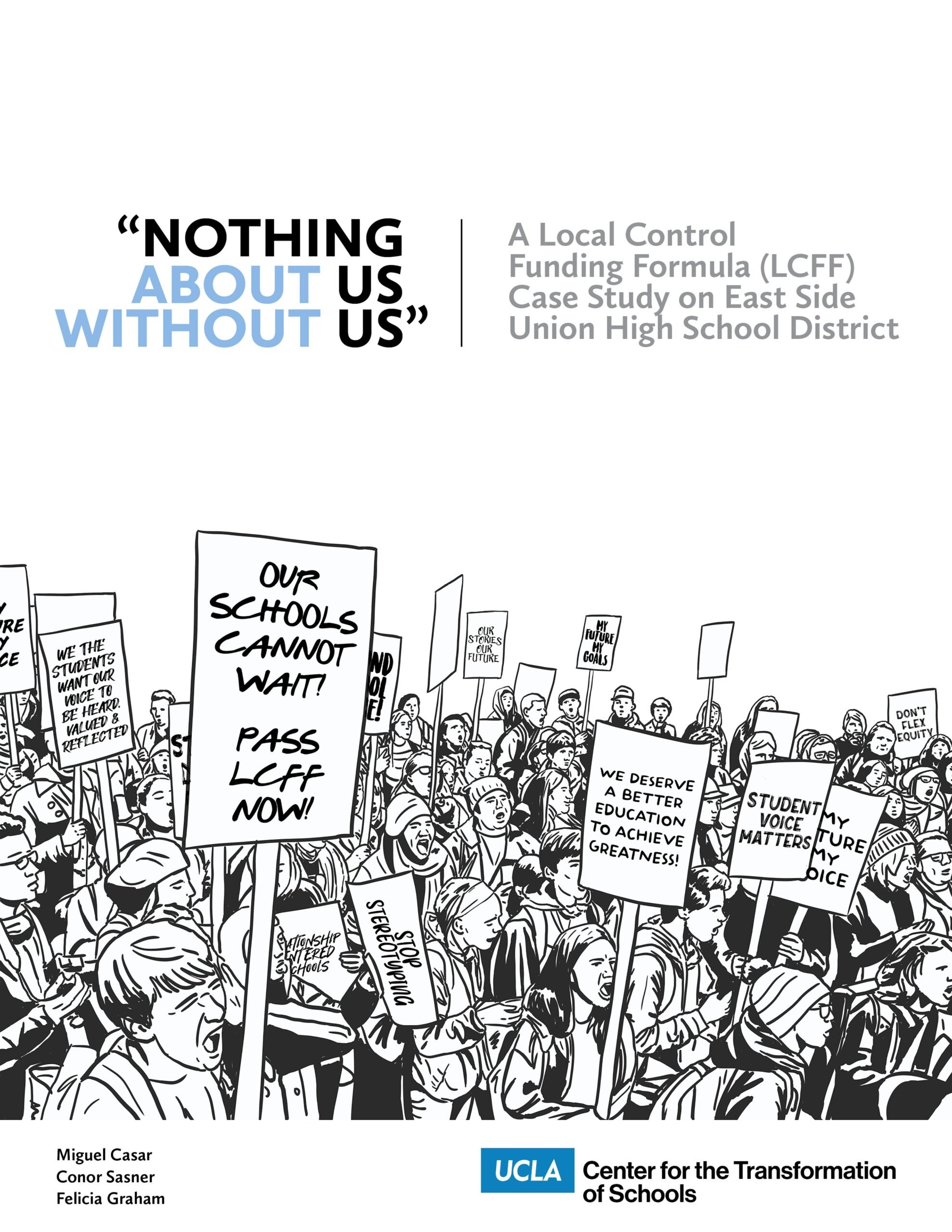“Nothing About Us Without Us”: A Local Control Funding Formula (LCFF) Case Study highlights partnership between East Side Union High School District and Californians for Justice, a youth-led educational justice organization.
As California schools and students look to recover from the battering of the COVID-19 pandemic, a new case study from the UCLA Center for the Transformation of Schools (CTS) illuminates strategies and practices for engaging the voice and power of youth in efforts to reimagine schooling and advance educational equity and opportunity.
“Nothing About Us Without Us” – A case study on implementation of the Local Control Funding Formula in East Side Union High School District details the experiences of the school system as they have worked in partnership with Californians for Justice to engage young people in pursuit of more equitable outcomes for every student.
The study is part of a larger set of case studies conducted by the center, highlighting the work of five districts in California that have sought to improve outcomes for students through California’s Local Control Funding Formula (LCFF). This set of studies seeks to understand how school districts are seizing the equity opportunities afforded by the state’s funding formula to better understand how educational policy is interpreted and enacted, particularly when young people are meaningfully involved in decision making.
“The pandemic has presented unprecedented challenges to students and schools. In response, California’s proposed budget for education for 2022-23 provides an unprecedented level of funding, including a five percent cost of living increase for LCFF,” said Joseph Bishop, executive director of the Center for the Transformation of Schools.
“As school districts make plans for moving forward, this case study highlights meaningful ways they can both center the voices of young people –especially the youth most impacted by educational injustices–in their decision making, and take meaningful steps towards enacting participatory and democratic practices in schools that will begin to make a real difference in their schools and communities,” adds Miguel Casar, lead author for the study and researcher at the center.
The study profiles the history and work of Californians for Justice (CFJ) within East Side Union High School District (ESUHSD). CFJ has long worked and organized in San Jose to address inequities in the community, building a partnership with the ESUHSD to empower students, and the school district leadership has shared a commitment to including student voices in decision making. The statewide implementation of LCFF and establishment of the Local Control Accountability Plan furthered their efforts to work together to address equity and importantly, emerged as a mechanism for the authentic engagement of the school districts’ students, encouraging student voice, power, and participation.
Little research has been conducted to better understand how young people have been critical in the implementation of LCFF and consequently, become key civic actors in their local communities.
The findings illustrate the power of youth voice, power, and participation, including the benefits of partnerships between school districts and community-based organizations to further equity and educational justice, and to address school structure and culture to advance youth voice and participation. The study also shows that engagement in democratic and critical spaces fosters a shift in students’ civic identities and their own education and academic trajectories.
“In the study, we can see and hear the long-term impact on the struggle for educational justice,” said Professor Tyrone C. Howard, faculty director, CTS. “But we can also already see tangible benefits of the authentic engagement of students and adults in schools and the community.”
The study shows that students can affirm and support the goals and the vision of the school district, and refine existing work in ways that positively impact decisions. In addition, students leverage their own unique perspectives and experiences to contribute new, innovative ideas to the school district.
The study also makes clear that there are important challenges ahead. For school systems to authentically support youth power, voice and participation, they must be ready to face long standing and deep-seated sets of structures, practices, and cultures that are contradictory to the principles behind participatory and democratic schools. In addition, school systems must act to address deficit-oriented beliefs and assumptions about students, especially Black, Brown, Indigenous, and other groups of marginalized students.
“This study shows how students, when empowered, are ready, willing, and able to have courageous conversations and ask difficult questions as they seek to tackle the injustices of the educational system,” said Casar. “The important question is, how ready are we to work alongside them and commit to the transformative change required to address these historic inequities?”
The case study, “Nothing About Us Without Us” will be presented and shared in a conversation with young people and representatives of Californians for Justice, January 25 at 1p.m. To participate, rsvp here.
The case study summary and full report will be available online on the UCLA CTS website at http://transformschools.ucla.edu/local-control-funding-formula-lcff-district-case-studies-east-side-union-hsd/.
